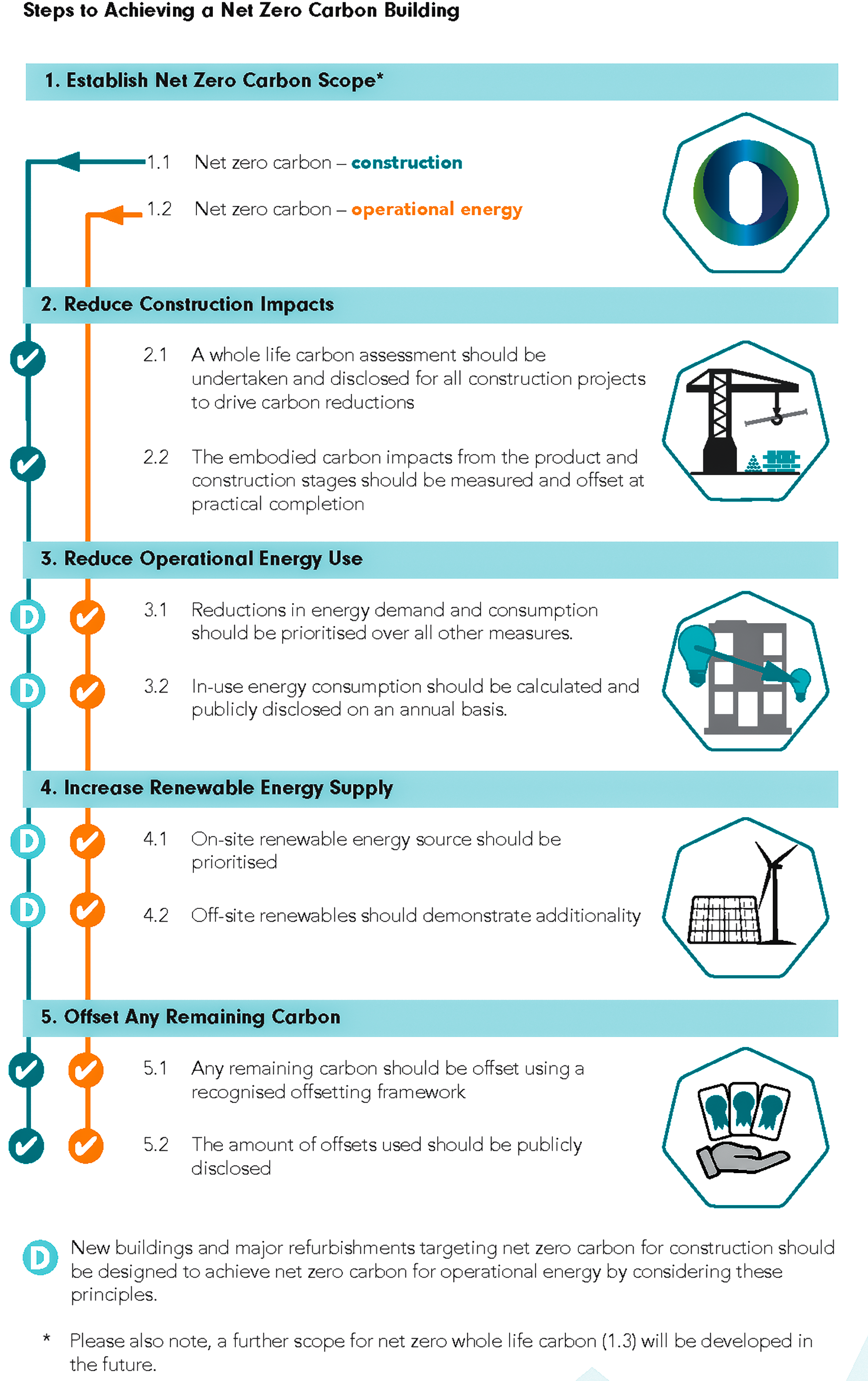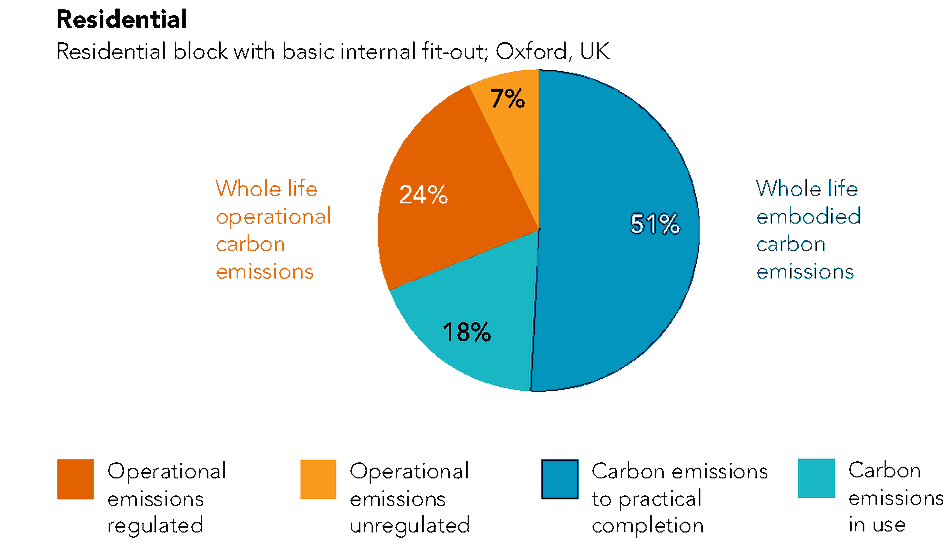
What is a Net Zero Carbon Building?
Net Zero Definition - Using the UK Green Building Council guidance the Net Zero Carbon Buildings definitions includes carbon use for construction, operational energy and whole-life emissions.
Passive House open day filmed November 2016
Net zero operational carbon emissions - Achievable today
The UK and Ireland governments are committed to sustainable growth and increasing their ‘green’ credentials. They have signed up to various legally binding targets and standards such as the Climate Change Act 2008 (CCA), this act mandates that an 80% reduction in CO2 must be achieved from the levels recorded in 1990 by 2050.
Recent government policies require all new homes from 2023 to mitigate, through various measures, all the operational carbon emissions produced on-site as a result of the regulated energy use. The definition of regulated energy includes energy used to provide space heating and cooling, hot water and fixed lighting. It does not allow for energy used by consumer appliances.
These government policies are well aligned with European Policy, specifically the Energy Performance of Buildings Directive which requires all operational energy of new Public Buildings to be Nearly Zero Energy Buildings (nZEB) from 2020. It is noted that in achieving this mandatory nZEB standard the performance of the building fabric will need to be close to that of the Passivhaus Standard.
What is a net zero operational carbon building?
A building must generate all its operational regulated energy and operational emissions unregulated (appliances) without adding carbon dioxide to the atmosphere. If the building generates more energy than it requires, the surplus can be exported to the grid and if it is at a deficit, energy can be imported. The building emissions must, however, taking these factors into account, be zero over the space of a year.
The operational energy used in dwellings accounts for more than a quarter of energy use and carbon dioxide emissions in the United Kingdom and Ireland. The amount of energy a home will need and the CO2 that it will produce each year can be calculated using SAP and DEAP software and this allows architects to calculate the amount of renewable technologies that are required to offset the CO2 produced.
How to achieve a net zero operational carbon building?
To achieve a carbon-neutral home, renewable technologies must be used to offset the CO2 produced from operational energy use. The renewable technologies installed to produce on-site energy can vary depending on the circumstances, location of the property and the desired outcome. Solar PV (Solar Photo voltaic Panels) are widely used to generate on-site electricity, and when combined with the efficiency of a heat pump can provide space heating, hot water and electric lighting for the building.
What is net zero embodied carbon?
Carbon emissions are associated with materials and construction processes used throughout the whole lifecycle of a building or infrastructure.
This embodied carbon is divided into two main phases of the building’s life.
Stage 1. Net zero embodied carbon – building construction
When the amount of carbon emissions associated with a building’s product and construction stages up to practical completion is zero or negative, through the use of offsets or the net export of on-site renewable energy.
Stage 2. Net zero ‘whole-life’ embodied carbon includes the carbon used after building completion
Embodied carbon as a result of maintenance, repair or refurbishment. Embodied carbon as a result of demolition and disposal. Possible embodied carbon savings due to reuse of materials.
Figure 1: Two current definitions for net zero carbon buildings
Reference - UK Green Building Council - Net Zero Carbon Buildings Framework - Published April 2019
Figure 2: Steps to achieving Zero Carbon buildings
Reference - UK Green Building Council - Net Zero Carbon Buildings Framework - Published April 2019
What is net zero ‘whole life’ carbon?
When, in addition to net zero operational carbon, upfront carbon and other embodied carbon across the building lifecycle is reduced to a level that is consistent with reaching net zero. Any residual emissions that remain unfeasible to eliminate should be neutralised through carbon removals, whether nature-based solutions or technologically-mediated processes, carbon must be stored.
Examples of total whole-life carbon emissions breakdown for new buildings
Reference - UK Green Building Council - Net Zero Carbon Buildings Framework - Published April 2019
Bringing embodied carbon upfront
Reference - World Green Building Council - Extract section from glossary showing embodied carbon in context
This glossary defines what is meant by certain key terms used within this report. In the following definitions we make reference to the lifecycle stages or modules defined in the widely-adopted European standard EN 15978 shown in figure below. Publication date September 2019.
The terminology used in this report cross-referenced to terms and lifecycle stages defined in EN 15978
Embodied carbon - Carbon emissions associated with materials and construction processes throughout the whole lifecycle of a building or infrastructure. Embodied carbon therefore includes: material extraction (module A1), transport to manufacturer (A2), manufacturing (A3), transport to site (A4), construction (A5), use phase (B1, eg concrete carbonation but excluding operational carbon), maintenance (B2), repair (B3), replacement (B4), refurbishment (B5), deconstruction (C1), transport to end of life facilities (C2), processing (C3), disposal (C4). Benefits beyond the system boundary (D) should also be reported separately to modules A-C. In the report we refer to the embodied carbon of both buildings and infrastructure as well as the embodied carbon of individual materials.
Upfront carbon - The emissions caused in the materials production and construction phases (A1-5) of the lifecycle before the building or infrastructure begins to be used. In contrast to other categories of emissions listed here, these emissions have already been released into the atmosphere before the building is occupied or the infrastructure begins operation.
Use stage embodied carbon - Emissions associated with materials and processes needed to maintain the building or infrastructure during use such as for refurbishments. These are additional to operational carbon emitted due to heating, cooling and power etc.
End of life carbon - The carbon emissions associated with deconstruction/demolition (C1), transport from site (C2), waste processing (C3) and disposal (C4) phases of a building or infrastructure's lifecycle which occur after its use.
Operational carbon - The emissions associated with energy used (B6) to operate the building or in the operation of infrastructure.
Whole life carbon - Emissions from all lifecycle phases, encompassing both embodied and operational carbon together (ie modules A1 to C4, with module D reported separately).
Beyond the lifecycle - Carbon emissions or emissions savings incurred due to reuse or recycling of materials or emissions avoided due to using waste as a fuel source for another process (module D). Consideration of module D is key for maximising resource efficient uses of materials at the end of life. Under forthcoming updates to European standards, it will be mandatory for product EPDs to report module D alongside other lifecycle stages in most cases, and will also be required for building assessments.












